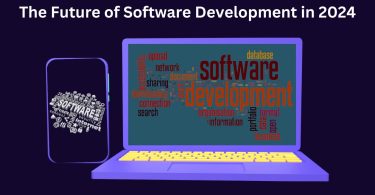Metaverse:
Metaverse is a complex integration of advanced technologies, a popular virtual world that immerses you in and interacts with a digital environment.
This discussion looks into the key technologies that are the power behind the creation of the metaverse.
Technology companies are using advanced developments such as blockchain, augmented reality, virtual reality, 3D reconstruction, artificial intelligence and the Internet of Things to increase immersion in the Metaverse.
Blockchain and Cryptocurrency:
Blockchain technology is the tool that allows for the decentralized and transparent ownership of digital assets, digital collectibles, value transfer, governance, accessibility and interoperability. Cryptocurrencies are the means of transactions in the 3D digital empire, where economic activities and social interactions are stimulated. An example is Decentraland, where the virtual lands are bought as non-fungible tokens(NFTs) using the cryptocurrency MANA, which in turn verifies and confirms the ownership rights through blockchain technology.
In the future, cryptocurrencies could be established as the driving force behind the economic activities within the Metaverse, thus, opening up the Metaverse as a viable workplace for remote workers.
Artificial Intelligence:
Artificial intelligence contributes to the improvement of the virtual reality spaces of Metaverse. AI technologies automate and optimize many processes, making them more interactive, engaging and personalized for the user. AI-based developments include chatbots, interactive characters, and avatars that are created to increase the user experience. AI also can enable in-the-moment direction for users while they are in the Metaverse, which will in turn shorten the learning curves and improve the user experience. AI integration is designed to deal with the complexity, monitor performance metrics, and provide customized experience, which will enable Metaverse to become a fully immersive digital world.
Augmented Reality (AR) and Virtual Reality (VR):
The use of AR and VR is one of the most prominent examples of the unification of the physical and digital worlds. It can be viewed as the roads that lead to 3D immersive experiences within the Metaverse. AR superimposes digital visuals into the real world employing smartphones and digital devices fitted with cameras. Users will be able to interact with virtual things that will be overlaid on their real surroundings like in the applications such as Pokemon GO. Contrary to VR that is fully computer-generated, it is accessible by using specialized headsets, gloves, and sensors. VR technology can simulate virtual environments, which is very similar to the Metaverse, giving users the chance to immerse themselves in virtual reality and interact with global friends.
Internet of Things (IoT):
The IoT has a lot of potential for Metaverse development as it is a network of devices that improve the virtual experiences that are seamless and immersive. IoT systems that consist of sensors, cameras, and wearables can monitor and track user behavior in real-time and give personalized feedback. With increasing attention to the Metaverse applications, IoT integration provides developers with an opportunity to create adaptive and immersive user experiences. It may lead to new income streams and stakeholder collaboration in the long run. IoT serves as a multidimensional factor in Metaverse creation and an important component of virtual reality and immersive digital environment development.
3D Reconstruction:
There has been a growing trend of its use during the pandemic, especially in sectors like the real estate and online shopping industries, where the lockdowns prevented physical visits to the properties. Agencies used 3D modeling to replicate the property tours and Metaverse was the envisioned one, hence the remote exploration and purchasing decisions were possible.
One of the Metaverse’s major issues is duplicating the physical world in digital space. 3D reconstruction provides a solution to this problem by creating realistic, highly accurate digital twins of physical places and objects utilizing special cameras and processing technologies. These digital twins, comprising detailed 3D spatial data and high-resolution photography, replicate physical environments within the Metaverse for immersive user experiences.
Spatial and Edge Computing:
Spatial computing relies on sensors and cameras that collect environmental data and edge computing utilizes the network edge to process and analyze these data in real-time. This integration holds a great deal of transformational potential for industries such as healthcare, logistics and manufacturing, which enables quick decision-making and informed decisions.
In addition, the emerging trend in spatial and edge computing technologies is expected to lead to the development of intelligent and innovative product and service offerings. In the future, as these technologies keep evolving, we will witness more and more innovative applications of them, which will make digital spatial interactions and the computational efficiency more and more advanced.
Conclusion:
Metaverse is becoming ever more existent and realistic. It is not a product of science fiction but of a complex interplay of new technologies. The blog discussed the main factors influencing this virtual world, including blockchain for secure possession, AI for personalized experiences and AR/VR for immersive interactions. The possibilities are limitless, from redesigning the remote work experience to creating a fully-fledged Metaverse economy. Through IoT and 3D reconstruction, we create a bridge between the physical and virtual worlds, which is then improved with the use of spatial and edge computing. Nevertheless, the metaverse has some issues like privacy and accessibility that need solutions for an inclusive platform. The future is full of opportunities.



